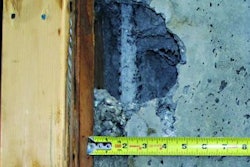Construction spending inched up for the second straight month in April, 0.4% – following downward revisions to the March spending figures – thanks to increases in private nonresidential and home-improvement spending, the Associated General Contractors of America reported in an analysis of new Census Bureau data. Association officials noted, however, that the gains were tempered by sluggish homebuilding and declining levels of public investment in construction.
"Overall economic conditions seem better than they have been for several years, which normally leads to well-rounded construction growth," said Ken Simonson, the association's chief economist. "But these figures may be deceptively positive, masking weakening public sector demand and still-weak demand for residential construction."
Simonson noted that the April results were boosted by a modest half-percent rise in private nonresidential construction and a deceptively large 3.1% leap in private residential spending. However, the residential growth was attributable to a 7.6% jump in the 'improvements' category, a number the Census Bureau frequently revises down in later months, as it did in March. The economist cautioned that the figures from more reliable residential categories—new single- and multi-family construction—declined by 1.0% and 0.1%, respectively.
Simonson noted that private nonresidential spending also was uneven. The largest category, power construction, grew 3.2%, and there were increases of 4.7% for communication construction and 0.8% for private health care construction. But there were decreases of 1.3% in commercial construction (retail, warehouse and farm), 1.0% in manufacturing construction, and 3.2% in private office construction.
The economist said the steep drop in public construction, which fell for the seventh straight month in April—by 1.9%—and shrank to a four-year low, was cause for concern. "It appears that federal stimulus and military base realignment work are tapering off, while state and local budgets for infrastructure have been shrinking for some time," he said. The four largest public categories, accounting for three-fourths of public construction spending, all declined in April: highway and street construction, -1.6%; educational, -2.7%; transportation facilities, -3.8%; and sewage and waste disposal, -2.5%.
Association officials said the mixed results show the importance of enacting long-term infrastructure funding bills for transportation, wastewater and drinking water, as well as having a tax and regulatory environment that encourages private investment in structures. "Economic recovery will remain sluggish and uneven unless construction and the sectors that depend on it share in growth," said Stephen E. Sandherr, the association's chief executive officer.



















